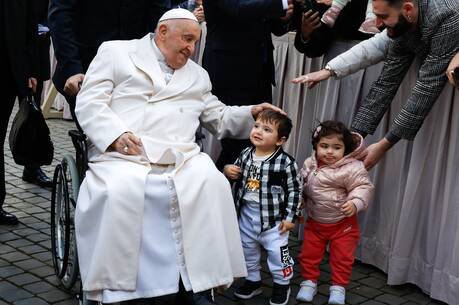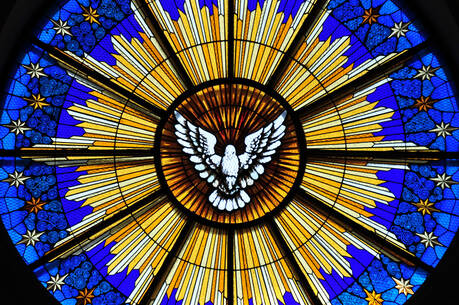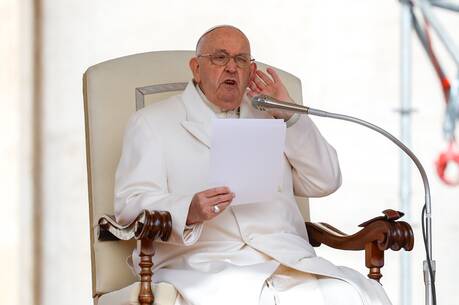Oral Tradition
While I have great appreciation for the article by Robert P. Waznak, S.S., “Preaching Faith in the Midst of Tragedy” (10/8), and recommended it enthusiastically to a class, I must demur from his comments (Letters, 10/29) on The Word for Oct. 8. Till proven otherwise I am willing to admit that the quote attributed to Karl Barth may not be found in his writings. I have, however, found it quoted by eminent theologians such as George Lindbeck of Yale, and I consulted Claude Welch, former president and dean of the Graduate Theological Union and pre-eminent living historian of modern Protestant theology. He said that is was probably part of the oral tradition. Not everything a teacher says spanning two generations appears in print, so the “multiple attestation” may argue that, even if not the ipsissima verba of Barth, the quote may represent his position, which Father Waznak also denies.
Mr. Welch stated that the quotation was “certainly consistent with his [Barth’s] attitude” and called attention to Barth’s engagement with the religious socialists, especially L. Ragaz, his stand against the Nazi’s and his role in the Barmen Declaration. Welch also mentioned that Barth had his students draw up a “synchronous chart” of world and cultural events for whatever period they were studying (see Welch’s chapter in Engel and Wyman, eds., Revisioning the Past: Prospects in Historical Theology, 1992).
Barth truly believed in preaching the Bible, but also in bringing the Bible to bear on real human problems. Finally, in mentioning Karl Barth as a “great theologian,” I did not mean to slight Karl Rahner, whom I have often cited in The Word. Even a rich Rahnerian stew could benefit from a soupçon of Barth.
John R. Donahue, S.J.
Baltimore, Md.
Hits the Mark
I would like to give recognition to John R. Donahue, S.J., for his consistent, week-after-week, very incisive and pertinent-to-the-times insights and exegesis of the Lectionary readings of each week. It isn’t that Father Donahue hits the mark occasionally, but that he does so consistently week after week in a most refreshing way.
(Rev.) Joe Annese
Boulder City, Nev.
Indeed a Prayer
The cover of the issue of Nov. 5 powerfully conveys a message that needs no words. The juxtaposition of the Crucifixion and the twin towers in flames, including the instrument of destruction, the plane, shows two horrific events that, although separated by 2,000 years, are powerfully connected and point up the devastating fact of “man’s inhumanity to man” as being quite alive, as if no lessons have been learned in those 2,000 years. Can our collective consciousness absorb the monumentality of this shame?
The artist, Michael O’Neill McGrath, O.S.F.S., presents a true picture of sadness and agony—physical and psychic. The anguish of the Mother of God and others at the foot of the cross, the mourning of the angels and above all the terrible expression on the face of God who became man in order to save us are made quite palpable by the skill of the artist. The body of the Savior appears more slumped than ever.
It is interesting that the halos and flames are the same yellow-gold color: Hence, it is used for good, as well as evil. I am grateful to America and to the artist for this powerful artwork. It is said that spiritual singing is praying twice; I would say the same for art. This cover is, indeed, a prayer.
Amie I. Tatem
Staten Island, N.Y.
Theology Lesson
I was deeply touched reading “A Theology of Grandparenting” by Thea Kielt Jarvis (10/22). Although I won’t be able to be at the arrival of my first grandchild in December, I pray God will, in time, give me my own theology lesson so that I will be able to lead my granddaughter to Jesus in everything I say and do.
Jackie Paluszak
Tallahassee, Fla.
Justice for Peace
I am sure you can defend yourself from the surprisingly harsh comments of Rabbi David Berger (Letters, 10/29), but I wanted to say not all would agree with him.
Many of us are distressed to see Israelis use tanks, helicopters and bulldozers in their “restrained” reprisals against Palestinians.
It seems to some of us that the state of Israel was founded without concern for the Palestinians living there. Until that injustice is corrected, Israel (and maybe the United States) will have no peace.
(Rev.) Anthony D. Russo
Greenville, N.H.
Voice, Thoughts Forward
I have just finished reading the Oct. 8 issue of America, and I commend you and your staff on this issue dealing with the tragic events of Sept. 11 and the aftermath, which extends globally in its effects. The articles are well chosen. In particular, I found George Lopez’s commentary on “After September 11: How Ethics Can Help” to express well the ground rules for developing a moral public policy when a government must deal with events attributed to terrorist factions in the world. The journal of James Martin, S.J., gives a real feel for the emotions, the faith and the goodness of all who have been involved at ground zero for this past month.
I would like to suggest that this issue would have been more complete for me if among the thinkers asked to reflect on war and peace you had found the voice of a woman ethicist, pacifist, theologian or writer to bring her thoughts forward. I feel that you would have given me, the reader, another perspective based in the reality and suffering facing women and children when “war and peace” becomes a part of daily life.
Mary Ann Coyle, S.L.
Denver, Colo.
Process
I enjoyed Karla Manternach’s commentary, “Staying Catholic at Twenty-Something,” (10/15) very much. She gave me many new insights into the younger generation’s relationship with the church, faith and religion. It doesn’t get much easier, though, as one advances into the older generations. For me faith and religious practice is a process that never ends.
The thing I have worked on and continue to work on is my parish faith community. Weekly Mass is not an obligation so much as a need. It is comforting to be with fellow travelers, even those who disagree with me on issues. We have the usual spectrum of conservative-liberal in our faith community. As the sister quoted by Ms. Manternach said, “The Spirit is stronger than all this crap.” And, as James Joyce said, “Here comes everybody.”
Lawrence R. Hoge
Brandon, Fla.
Commend to God
Robert P. Waznak, S.S., is going by the book with his criticism of the term Mass of Resurrection instead of the official designation, Mass of Christian Burial (10/8). It is the people and their pastors who made that change, and with good reason. The church shifted in its funeral rites from black to white vestments, covers the coffin in white, threw out the old tallow candles, and gave up the Dies Irae. People have obviously understood all this as a shift to an emphasis on resurrection. It is an emphasis that has been badly needed. Of course “there is a time to mourn,” but that usually comes later, and what we have not had is a strong foundation for a resurrection faith. The priest should build this with the homily; the eulogist should give thanks for the lift we have shared. Father Waznak also objects to calling a funeral the celebration of someone’s life. But what else would you call Chicago’s great farewell in the cathedral for Cardinal Joseph Bernardin? And sadly now there are thousands for whose lives we wish to give thanks (and celebrate) as we commend them to God.
(Rev.) Joseph T. Nolan
Newton, Mass.
Achieving Collegiality
Your Signs of the Times (10/28) reports that five of the seven bishops’ groups at the October Synod of Bishops called for improvements in the synod process itself. A significant improvement could entail publishing the specific propositions made at the end of the synod to the pope and then a more systematic response to them, in his “Exhortation,” made a year or so later. The propositions are now kept secret and the pope’s response, quite accurately termed an exhortation rather than a systematic response, does not follow the order of the propositions. His observations are footnoted to the bishops’ propositions, but it is impossible to ascertain precisely what the bishops proposed and precisely where and how the pope responded.
A proposition leaked from the 1998 Synod for Asia requested that local churches be authorized to approve vernacular translations of liturgical texts without prior Vatican review. In his exhortation John Paul II declared that “the national and regional conferences of bishops need to work more closely with the Congregation for Divine Worship.” The footnote reads, “Proposition 43.” In that synod, the pope’s observations footnoted 50 of the Asian bishops’ 59 propositions, leaving nine without any response.
Publishing the specific propositions of the synod and being readily able to identify the pope’s response would be helpful to the synod’s goal of achieving collegiality and communio.
(Msgr.) Harry J. Byrne
New York, N.Y.







